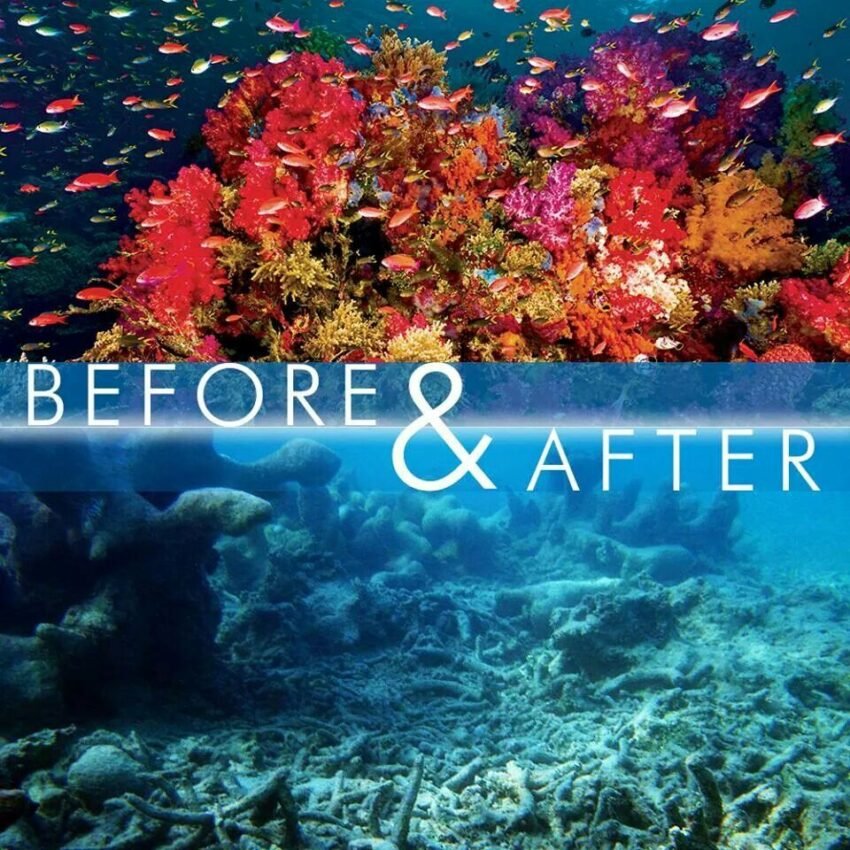The Ocean: Our Blue Lifeline
Covering more than 70% of Earth’s surface, the ocean is a vital component of our planet’s climate system, ecosystem balance, and human survival. Often called the Earth’s “blue lungs,” oceans absorb about 25% of all carbon dioxide emissions and generate over 50% of the oxygen we breathe. However, this lifeline is now under threat. Climate change is transforming the sea in alarming and irreversible ways, affecting not just marine biodiversity but also human populations across the globe.
Rising Ocean Temperatures and Their Ripple Effects
One of the most direct consequences of climate change is the rising temperature of ocean waters. As global air temperatures climb due to greenhouse gas emissions, oceans absorb much of this excess heat. According to the Intergovernmental Panel on Climate Change (IPCC), the top 700 meters of ocean water has warmed significantly since the 1970s.
Warmer ocean temperatures disrupt marine ecosystems. Coral reefs, for instance, suffer from bleaching when water becomes too warm. Coral bleaching occurs when corals expel the algae (zooxanthellae) living in their tissues, turning them white and often leading to death. This threatens not only the coral but the entire marine food web that depends on it.
Melting Ice and Rising Sea Levels
As temperatures rise, polar ice caps and glaciers are melting at an unprecedented rate. This process is causing global sea levels to rise, currently estimated at an average of 3.3 millimeters per year. While that may sound small, the cumulative effect over decades is devastating.
Rising sea levels increase the risk of coastal flooding, erosion, and saltwater intrusion into freshwater supplies. Low-lying island nations such as the Maldives and Kiribati face existential threats, while major coastal cities like New York, Jakarta, and Mumbai are investing billions in climate resilience infrastructure. The future of many urban areas hangs in the balance.
Ocean Acidification: A Silent Killer
Another less visible but equally alarming issue is ocean acidification. The ocean naturally absorbs carbon dioxide from the atmosphere. But due to excessive emissions, the amount of CO₂ absorbed is increasing dramatically, lowering the pH of seawater. This chemical change makes it more difficult for marine organisms like corals, shellfish, and plankton to build their calcium carbonate shells and skeletons.
These creatures form the basis of the marine food chain. Their decline threatens the survival of fish species and ultimately endangers the livelihoods of millions of people who rely on fisheries for food and income.
Disrupted Weather Patterns and Marine Currents
Oceans regulate global climate by transporting heat across the planet via ocean currents. The Gulf Stream, for example, plays a crucial role in moderating the climate of Europe. But warming oceans are slowing down this system, potentially leading to drastic weather shifts including colder winters in Europe and stronger hurricanes in the Atlantic.
Additionally, changes in ocean temperature and currents can trigger extreme weather events like cyclones, typhoons, and marine heatwaves. These events cause billions in damage, displace communities, and further stress fragile ecosystems.
Loss of Marine Biodiversity
The cumulative effects of warming, acidification, pollution, and overfishing are pushing marine life to the brink. Iconic species like sea turtles, whales, and sharks are facing habitat loss and food scarcity. Migratory patterns are changing, and breeding grounds are being destroyed.
Over 90% of fish stocks are either fully exploited or overfished, according to the UN Food and Agriculture Organization. Without intervention, this could lead to ecological collapse, with entire ecosystems unraveling under the stress of climate change.
The Human Toll: Communities at Risk
The impacts of climate change on the ocean are not just environmental—they are deeply human. Around 40% of the world’s population lives within 100 kilometers of the coast. These communities face increasing threats from sea level rise, storm surges, and the loss of protective ecosystems like mangroves and coral reefs.
Fisherfolk, especially in developing countries, are losing income due to declining fish populations. Island nations are experiencing cultural erosion as their ancestral lands disappear beneath the sea. Public health is also at risk, with waterborne diseases becoming more prevalent in warmer, more acidic waters.
Plastic Pollution and Warming Waters: A Dangerous Mix
Climate change is compounding the already critical issue of ocean plastic pollution. As waters warm, plastic breaks down into microplastics more quickly, contaminating the marine food chain. These particles are ingested by marine animals and eventually make their way onto our dinner plates.
The toxic combination of chemical pollution and climate stress weakens ecosystems, reduces species resilience, and jeopardizes food security for billions of people. This interconnected threat underscores the urgency of comprehensive action.
The Global Response: Is It Enough?
Efforts to combat climate change and protect the ocean are underway, but progress is slow and inconsistent. The 2015 Paris Agreement set important targets for limiting global temperature rise to below 2°C—but achieving this requires unprecedented global cooperation.
Marine protected areas (MPAs) have expanded, and countries are investing in sustainable fisheries, coastal restoration, and renewable energy. However, enforcement is often weak, and illegal practices persist.
Climate finance is critical to help vulnerable nations adapt and build resilience. Still, commitments from wealthy nations frequently fall short of promises, leaving the most affected populations without the resources they need.
Innovative Solutions and Blue Technologies
While the challenges are vast, so are the opportunities for innovation. Blue carbon initiatives—such as restoring mangroves, seagrasses, and salt marshes—can sequester vast amounts of carbon while protecting coastlines. Ocean-based renewable energy, like offshore wind and tidal power, can reduce our dependence on fossil fuels.
Emerging technologies, such as ocean-cleaning drones and AI-based monitoring systems, offer hope for restoring marine ecosystems. Governments, businesses, and citizens must invest in these solutions and scale them rapidly to meet the urgency of the crisis.
The Role of Individuals in Ocean Protection
While systemic change is essential, individuals also have a critical role to play. Reducing single-use plastics, supporting sustainable seafood, conserving energy, and advocating for policy changes can collectively make a difference.
Educational campaigns, beach cleanups, and citizen science projects engage people directly with the ocean and foster a sense of stewardship. Protecting the sea is not just a job for scientists or politicians—it’s a responsibility we all share.
A Call to Action: Time Is Running Out
The transformation of our oceans is one of the most pressing crises of our time. The choices we make in the next decade will determine the health of the ocean for generations to come. We must act now—with bold leadership, international collaboration, and a unified commitment to safeguarding our blue planet.
Oceans have given us life, food, and wonder. Now, they need our help. The time to act is not tomorrow or next year—it is today.


